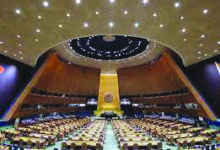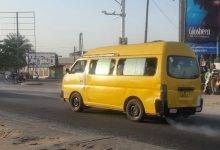Need to expand air travel within Ghana: Perspective of Aviator Wg. Cdr. Kwaku Kekrebesi – Part 2
In the past, any attempt to land an airplane on Paga airstrip, invariably leads to the violation of the airspace of Burkina Faso with its attendant protests.
Northern Region has Yendi airstrip that can be developed into a district aerodrome. Tamale International Airport though not adequately serving its purpose as international airport, still remains the main hub of air travel in the northern parts of Ghana. Professional assessment of air requirements in the region would be required.
With Savanna Region, the capital, Damongo has an airstrip that can also be upgraded into a regional airport. Someone, however, reminded me that a regular airport in Damongo could disturb the peace of the wildlife (fauna). Other alternatives can be found, like Daboya airstrip.
Upper West Region has one fully operational airport in Wa, the capital. Nandom once had an airstrip which I am told cannot be reactivated. The region needs at least one more aerodrome towards the north.
In the Oti Region, Kete Krachi had an airstrip that can also be upgraded into a district aerodrome/airport. Survey of the areas around Dambai, the capital, will show a beautiful scenery for a lakeside airport. This brings to mind the importance of an airport in Hohoe, serving as the second airport in the Volta Region.
Hohoe is a transitional town between Volta and Oti regions. Indeed Hohoe marks the beginning of Oti Region and also the end of the Volta Region. The largest commercial town in the Volta Region. Bank of Ghana and CMB are present in Hohoe. The centre of the cocoa and coffee farming in both regions.
Western North Region must need an airport immediately. The region is the heartbeat of cocoa farming, anywhere. Siting an airport at the capital, Sefwi Wiawso will be great.
The closeness of Sefwi Wiawso to the Ivorian border must be kept in mind.
There are a number of airstrips in the Western Region. These may be reactivated into district aerodromes to benefit both Western North and Western regions.
Amongst the two Bono and Ahafo regions, only the Bono Region has an airport in its capital, Sunyani. Mim in Ahafo Region had an airstrip which may follow the usual call for rehabilitation.
A survey to construct airports at vantage areas, including, Bono East Region, will be in order. An aerodrome at Techiman, the capital, will be good. Techiman is also close to Sunyani, air wise.
Ashanti Region has only one regular airport in Kumasi, for its size the region needs more aerodromes/airports. Again, the general survey will show the suitable sites.
Obuasi has an aerodrome constructed by Ashanti Goldfield which can easily be upgraded to an airport. The proximity of Obuasi to Kumasi, need to be considered though.
It is important to state that, Accra remains the only international airport Ghana has. In my opinion, Tamale and Kumasi as international airports are just white elephants.
Furthermore, Greater Accra being one of the smallest regions hardly qualifies for any additional air facilities. Upgrading Afienya into an aerodrome is all I will suggest.
I was laying emphasis on the reactivation of old airstrips, because, in my estimation, it may turnout to be cheaper; since preliminary works must have been done on them already.
For example, wind direction, topography, obstacle clearance and so on. Ghana Air Force, the custodian of these airstrips would be expected to help in the exercise.
This analysis does not preclude the construction of aerodromes/airports in any of the 275 districts. Some districts will need just one aerodrome/airport to serve a number of them. A detailed survey by Airport Company would unearth the true picture of aerodromes/airports we need.
Full employment of Ghana Airport Company is envisaged. So Koforidua and Cape Coast are still in the picture. Air Traffic Control, is more than capable in addressing their peculiar situations.
The write up is meant to arouse interest in opening up the country for safe air travel, all in the public interest. It may not necessarily be the panacea for the expansion of the aviation industry in Ghana. However, job creation leading to employment cannot be ruled out, not to mention the boast to the tourist industry.
Now I wish to lay some emphasis on the type of aircraft I have in mind to be used on these nationwide aerial travels. Ghana, comparatively, is a small country.
We do not need jet aircraft which will turn out to be expensive in operation. Ten, 40, up to a maximum of about 50 seater – turboprop aircraft will do the job.
An authority, comparing turboprop and jet operations, said that, averagely, the cost of a flight on turboprop could be 40 per cent lower than jet, on a flight under two hours. Two hours is about the maximum flight time between any two points in Ghana.
The aim must be to reduce cost of operation to the barest minimum, while maintaining focus on safety. About safety, GCAA, is more than capable in ensuring it.
The cost of aviation fuel – jet A – 1, must be looked at, with the view to reducing, if not eliminating, all taxes on fuel to be used in domestic flights. Airport charges must be in cedis, strictly – Bank of Ghana will be happy to read this.
All expertise must be summoned on board. The Air Force has had some experience in operating domestic flight – Airlink. We can tap their knowledge in the field. We may also link up with the aviation programmes in KNUST and Legon and, indeed, all the Technical Universities, for technology transfer purposes.
I am looking forward to the day we all can see aircraft with names like Nkawkaw, Abakrampa, Gambaga, Axim, Sefwi Wiawso, Hohoe, Dambai, Tumu, Goaso, Agordomi, and many others, written on their sides, going on domestic flights to these destinations.
That will be the day we shall say, bye bye to carnage on our roads. Happily, one unintended consequence of encouraging air travel is to reduce the number of vehicles on our roads and hence making the roads safer.
In retrospect, the carnage on our roads has necessitated our seeking solace in air transport as an alternate means of travel.
This choice has brought home the need to educate the general public to take advantage of the safety inherent in air travel; rehabilitate our airstrips all over the country, into aerodromes/airports, and even build new ones.
The capitals of our 16 regions and the 275 districts will serve as foci for the distribution of the aerodromes/ airports.
Ghana Airport Company will serve in full deployment as the kingpin in the building of these aerodromes/ airports and requisite facilities.
All resource institutions will be deployed, including the universities, offering technological innovations.
Cost cutting leading to low fares would be expected to attract all and sundry.
Turboprop, with seating capacity between 10 and a maximum of around 50, would be the type of aircraft to be used to keep cost of operations low. It looks, indeed, like domestication of aviation.
At the end, encouraging Ghanaians to travel by air, would lead to reduction in road vehicular traffic, resulting in safety on our roads.
Email: kkekrebesi@gmail.com
Contact: 0208134583
[The writer is a Pilot, formerly with Ghana Armed Forces]
BY WG. CDR. KWAKU KEKREBESI



